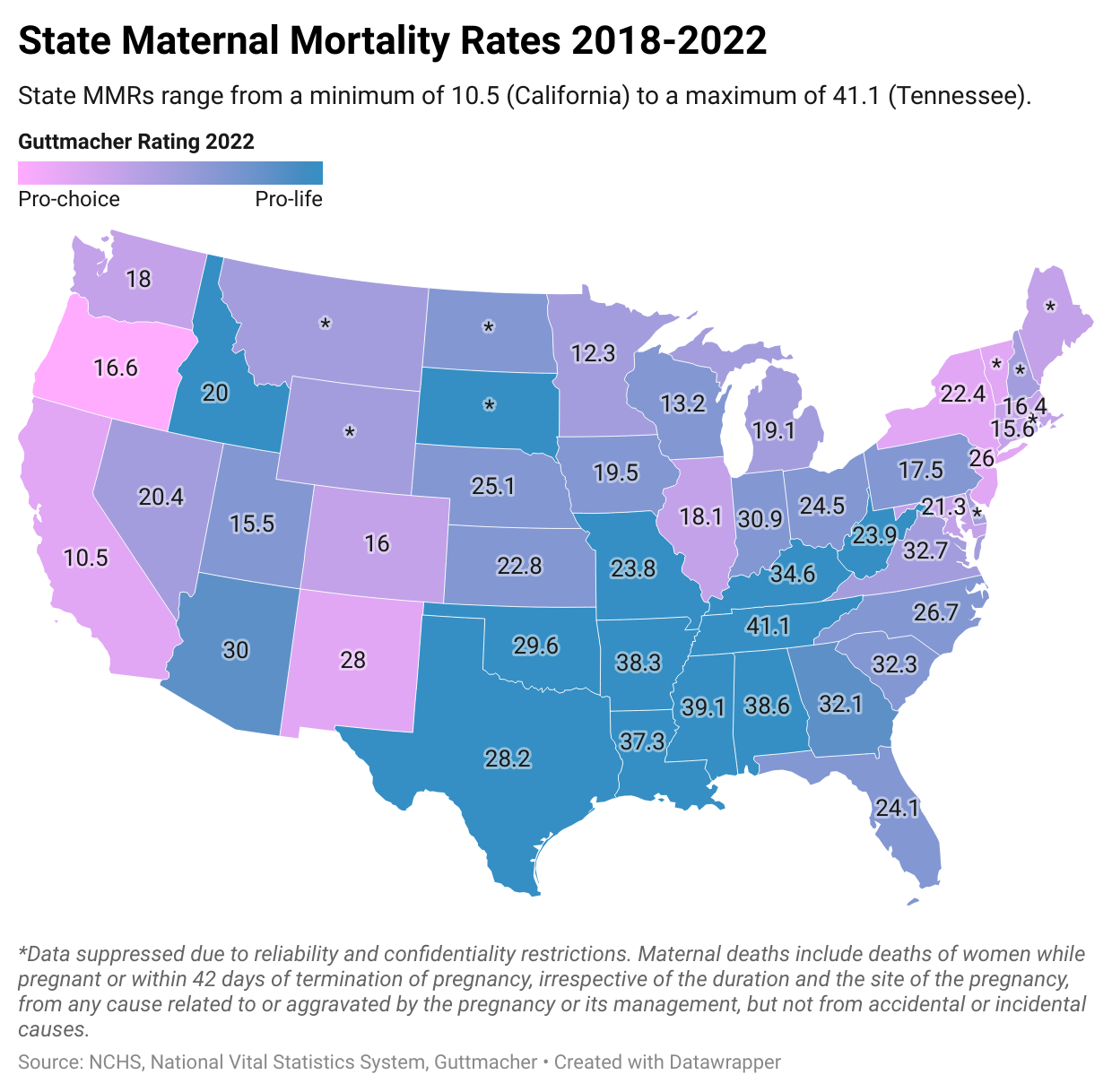A clear definition of “abortion”?
Post-publication edit: SPL’s Herb Geraghty and Monica Snyder streamed an in-depth conversation about the complexities of defining “abortion.” Get the replay link here:
In March 2025 the journal Theoretical Medicine and Bioethics published “Defining ‘Abortion’: a call for clarity“. In this article philosopher Nicholas Colgrove suggests six questions to help medical professionals, legislators, academics, and advocates define exactly what they mean by “abortion.” Colgrove ultimately proposes his own definition:
Abortion: An act that, via medicinal or surgical intervention, secures the death of [a prenatal human*] without regard for [their] survival.
*Colgrove uses simply e to refer to a zygote, embryo, or fetus in vivo. In this post I will instead use the term “prenatal human.”
Why should you care?
If medical professionals are confused about the meaning of “abortion” medically or legally, then they may hesitate to treat mothers, putting them at significant risk of becoming substantially disabled or even dying. Further, when anti-abortion advocates each use the word “abortion” differently, it confuses outsiders about where we stand on medically necessary procedures. We should explore what we mean by “abortion” to find an easy-to-understand definition for everyone to use.
Colgrove asserts that his six questions about the meaning of “abortion” can help us have better debates, write better laws, and provide better healthcare.
What’s the problem?
Colgrove illustrates inconsistency between medical definitions of “abortion” by discussing five definitions from various medical sources:
- Reviewer’s definition: Abortion is “the removal or threatened removal of pregnancy tissue, products of conception or the fetus and placenta (afterbirth)”
- Williams Obstetrics: Abortion is “the spontaneous or induced termination of pregnancy before fetal viability”
- Merriam-Webster Medical Dictionary: Abortion is “the termination of a pregnancy after, accompanied by, resulting in, or closely followed by the death of the embryo or fetus”
- ACOG: Abortion is “an intervention intended to terminate a pregnancy so that it does not result in a live birth”
- UpToDate: Abortion “refers to pregnancy loss up to 20 weeks (sometimes called spontaneous abortion) or pregnancy termination at any gestational age”
If even medical definitions differ, then this proves that it is not just legislators who are struggling to agree upon a coherent definition that tracks with the abortion debate.
Colgrove reasons that in order to provide sufficient clarity, a definition of abortion must (a) be simple, (b) refer to all disputed acts, and (c) be limited only to disputed acts.
The six questions
By carefully combing through the laws of every state in the USA (as of February 14th, 2024), Colgrove identified six major points at which legal definitions of “abortion” diverge. The questions that arise from these points are:
1. Does pregnancy begin at conception or implantation?
2. Does enabling abortive acts count as performing an abortion?
3. Does abortion terminate pregnancy?
4. Does the intention of termination matter?
5. Does the provider need to know that they may kill a prenatal human?
6. Does the provider need to know that the procurer is pregnant?
Colgrove’s six answers
Colgrove offers answers to his questions:
- Does pregnancy begin at conception or implantation? It is irrelevant when pregnancy begins; what matters is whether or not an intervention harms a prenatal human, as this is what causes dispute over acts.
- Does enabling abortive acts count as performing an abortion? Enabling abortive acts differs from performing an abortion; providing abortifacients can still be a separate crime.
- Does abortion terminate pregnancy? Termination of the life of the prenatal human must occur to be an abortion, but just because termination of life occurs does not mean an abortion has happened.
- Does the intention of termination matter? Intention should be avoided as it tends to make definitions of abortion either too narrow or too complex, thus causing confusion.
- Does the provider need to know that they may kill a prenatal human? Knowledge of the risk of prenatal death can determine someone’s culpability or responsibility for an abortion, but not whether an abortion has happened.
- Does the provider need to know that the procurer is pregnant? Knowledge of pregnancy is problematic as not requiring certainty can be easily exploited to harm prenatal humans, while requiring certainty can restrict healthcare unnecessarily.
The definition
In an attempt to develop a definition of abortion that (a) is simple, (b) refers to all disputed acts, and (c) is limited only to disputed acts, using his answers to the questions as guides, Colgrove proposes his new definition of abortion.
Abortion: An act that, via medicinal or surgical intervention, secures the death of [a prenatal human*] without regard for [their] survival.
He then carefully dissects his deliberate choices of words.
- An act: abortion is something done, not a random or natural occurrence like miscarriage.
- Medicinal or surgical intervention: abortion is a feticide distinct from fetal homicide.
- Secures the death of [a prenatal human]: abortion may directly kill or indirectly let die.
- Without regard for [their] survival: abortion may include acts performed with the intention of or indifference to fetal demise.
Importantly, Colgrove’s definition also does not
- Invoke pregnancy; it instead focuses on how prenatal humans are treated.
- Imply that enabling abortion is performing abortion.
- Conflate abortion attempts with successful abortions.
- Apply to removal of a prenatal human’s remains.
- Include treatment of the mother that might harm the prenatal human, such as surgery for ectopic pregnancy and chemotherapy.
- Prescribe the permissibility of abortion; it merely identifies what is an abortion.
Some caveats
Colgrove acknowledges that, under his definition, some previable deliveries will be considered abortions, while others will not, depending on whether or not the provider acts with regard for the prenatal human’s survival. He contends that adequate regard for a prenatal human’s survival means having a willingness to secure their death only under extraordinary circumstances.
Colgrove emphasizes that we do not have to accept his definition of abortion. Rather, he finds it far more important that we use his framework of six questions to discuss and come to agreement about exactly what we mean by “abortion”.
Are some abortions medically necessary?
Under Colgrove’s definition, abortion may sometimes be permissible, especially when performed under “dire circumstances.” Thus we, as the Pro-Life Movement, must reckon with the possibility of medically necessary abortions. The question becomes: what is “dire” enough to justify such an act?
For instance, let’s examine methotrexate, a chemotherapy medication that fatally disables an embryo’s cells. This medication can sometimes be used to treat ectopic pregnancy without an invasive surgery, which avoids the risk of causing substantial fertility issues in the future. Colgrove writes, “if actively ending [the prenatal human’s] life is incompatible with possessing sufficient regard for [their] survival, then methotrexate use will be defined as ‘abortive,’ even when applied to ectopic pregnancies.”
If methotrexate is an abortion, and salpingostomy or salpingectomy are available alternative interventions, then is methotrexate for ectopic pregnancy permissible? To answer this, I’d like to explore the suggestions of pro-life scholar Kristina Artuković in her essay, “Erasing the Pregnant”. Artuković writes:
Push[ing] doctors to take extra steps to cause fetal death indirectly or to delay treatment until maternal health indicators worsen… incentivize[s] doctors to go below the standard of care… Medical indications must encompass any serious physical health risks: whether underlying, developing, or imminent.
She argues that we must recognize mothers as the primary patient in pregnancy, and grant them medical primacy. In Artuković’s view, to demand that a mother be subjected to a surgery on her fallopian tube while methotrexate is a viable option is to force her to risk her fertility, when as the primary patient it should be her decision to risk such a sacrifice extraordinary to healthy pregnancy.
So, adopting maternal primacy is just one potential solution to resolving the question of medically necessary abortions. As with the definition of abortion itself, it is a question worth generous and rigorous dialogue.



